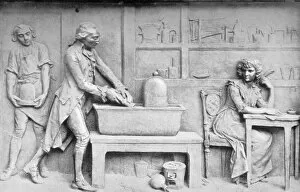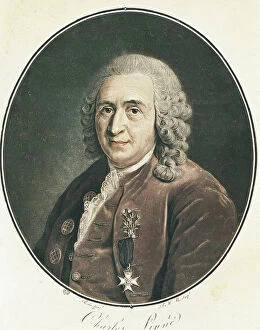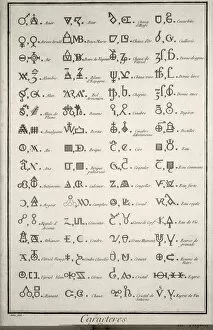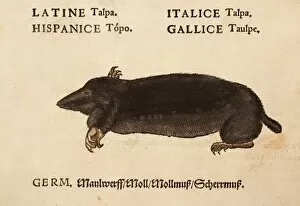Nomenclature Collection
"Nomenclature: Tracing the Threads of Scientific Language Through History" In the realm of science, names hold immense power
All Professionally Made to Order for Quick Shipping
"Nomenclature: Tracing the Threads of Scientific Language Through History" In the realm of science, names hold immense power. They encapsulate centuries of knowledge and discoveries, connecting us to the brilliant minds that shaped our understanding of the world. Antoine Lavoisier, a renowned chemist, and his wife stand side by side in an old photograph, their faces reflecting their shared passion for unraveling nature's mysteries. A weathered tabula secundum accurata Ventorum veterem et nova reveals ancient winds charted meticulously by unknown hands. The delicate strokes on a chromolitho depict Carl Linnaeus, a Swedish botanist and zoologist who classified countless species with unwavering dedication. Walking along Via Giulia street in Rome, one can't help but notice a plaque honoring those who paved the way for scientific progress. Alchemical symbols from the 18th century whisper secrets long forgotten but still waiting to be deciphered. A childhood chromolitho captures young Linnaeus inquisitively exploring nature's wonders - foreshadowing his future as one of history's greatest naturalists. An engraving immortalizes him as he delves deeper into his studies, leaving no stone unturned in his quest for knowledge. Amidst these luminaries stands Antoine Lavoisier once more - this time depicted through caricature. His genius shines through even amidst playful exaggeration; he is forever remembered as a pioneer in chemistry. Simon Marius gazes at distant stars with wonder-filled eyes - a German astronomer whose contributions expanded our cosmic understanding beyond measure. And there it is again - Linnaeus' name resurfaces alongside Carl von Linne –a man dedicated to unveiling nature's secrets until nearly losing himself within its vastness. Sprigs of Linnea adorn illustrations paying homage to this extraordinary scientist; they symbolize resilience and determination against all odds—a testament to humanity's insatiable thirst for knowledge.



















